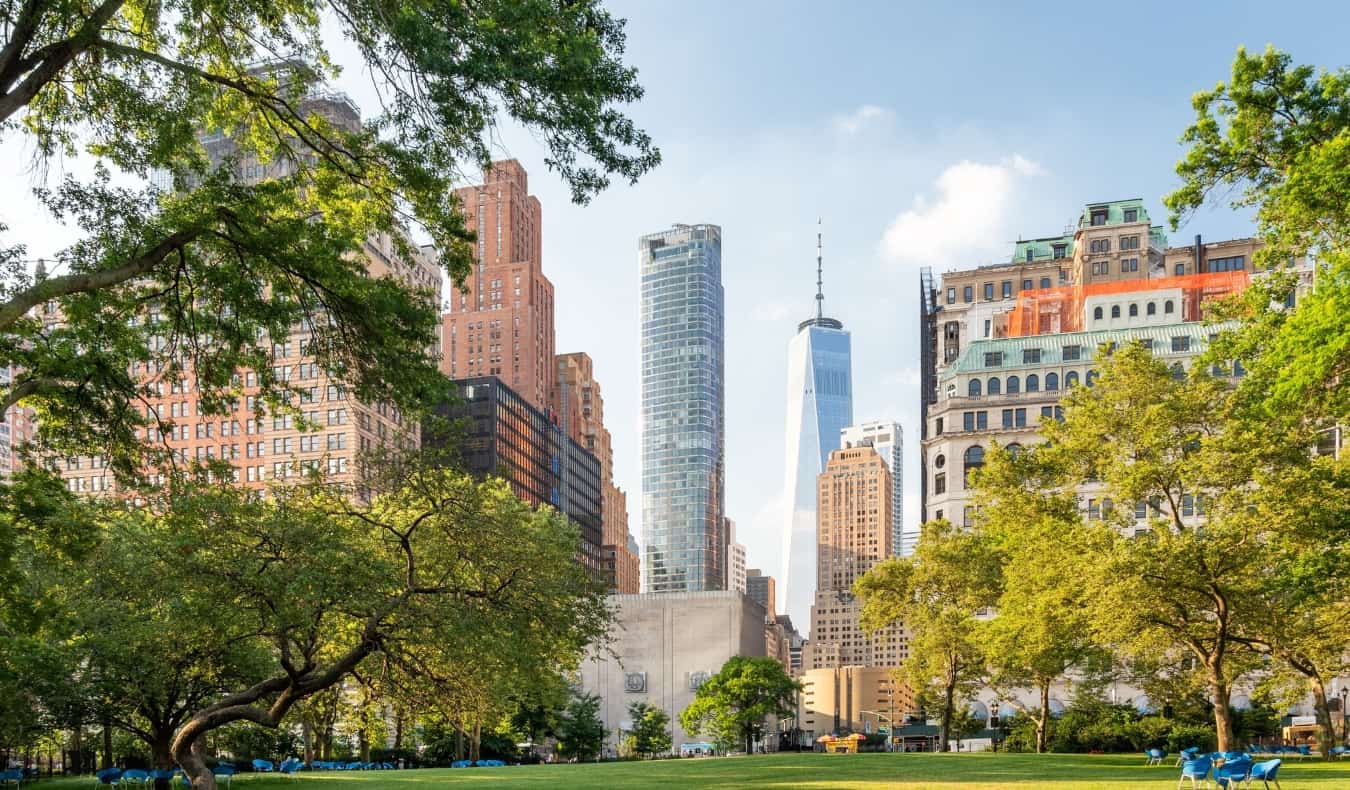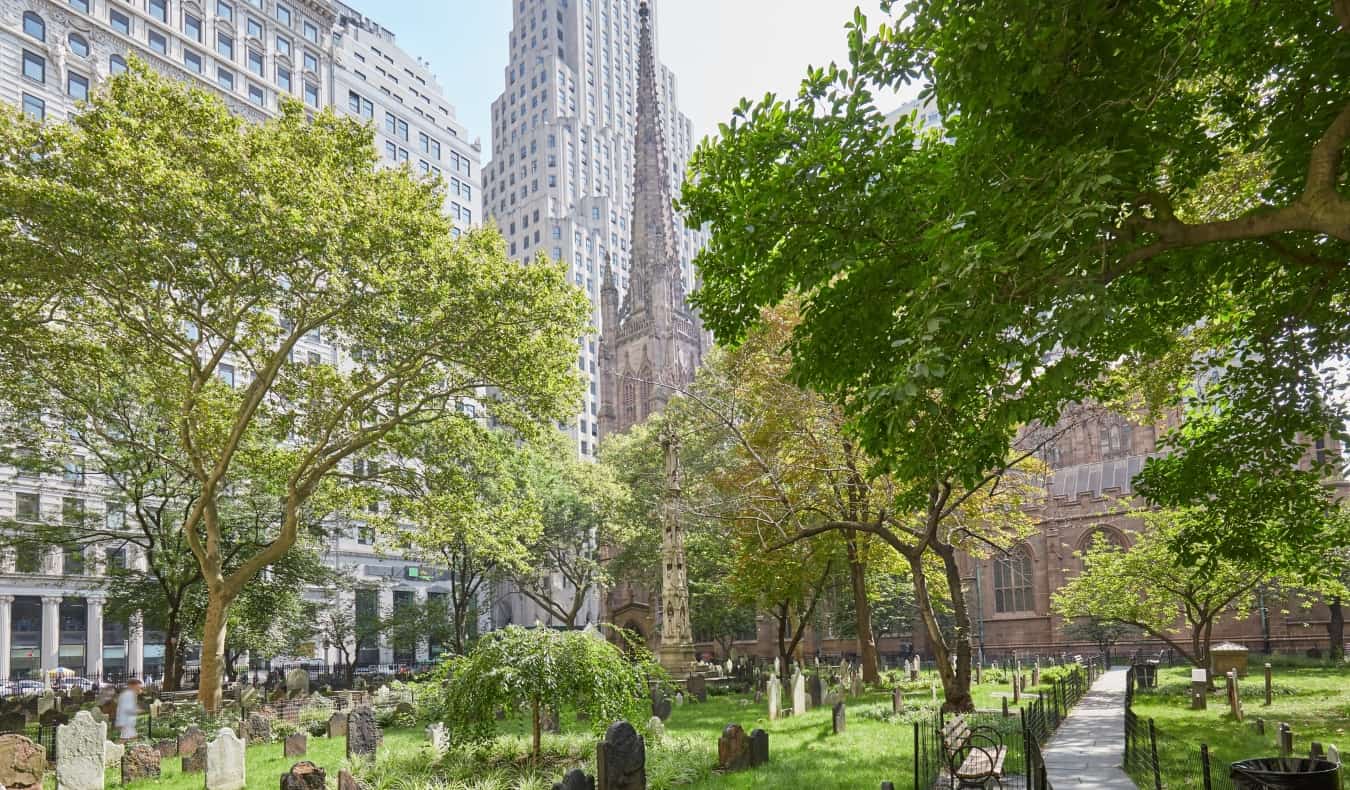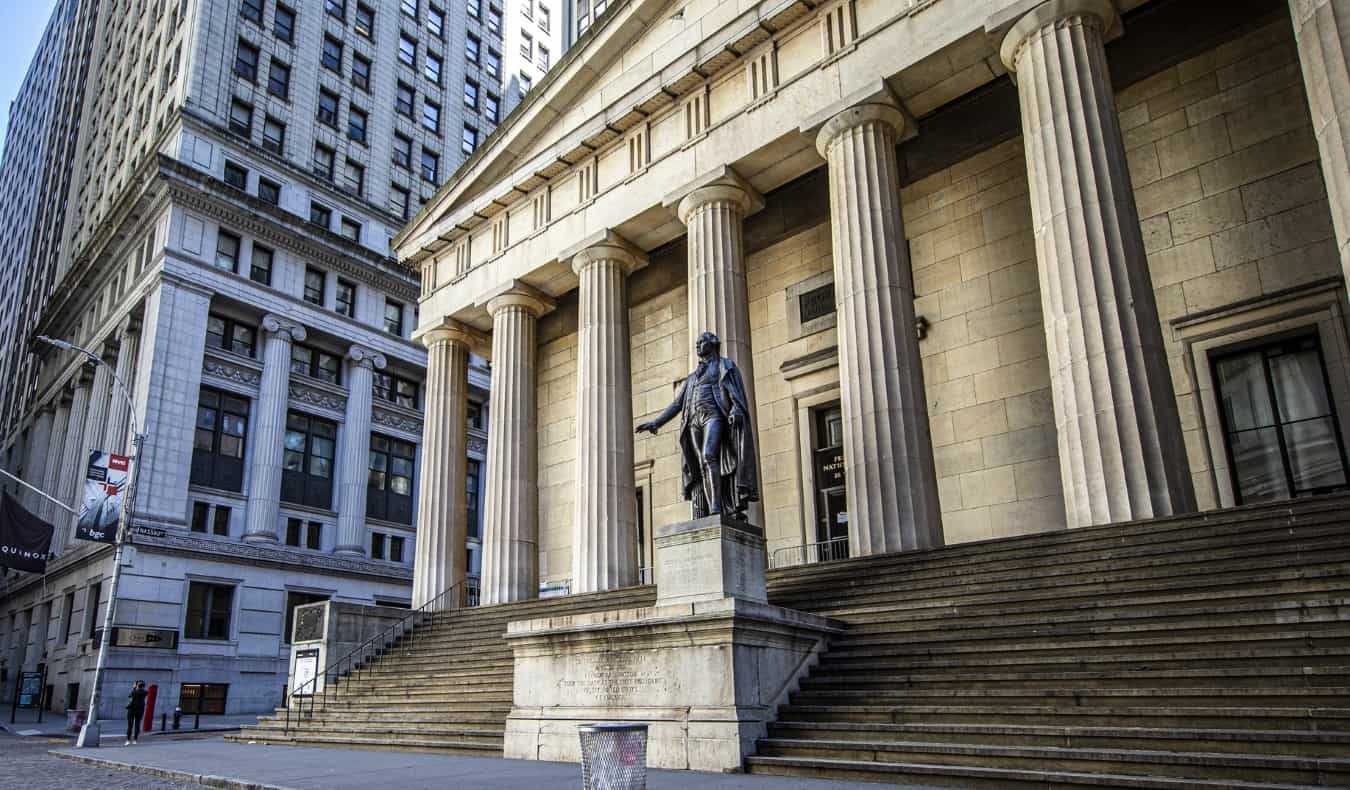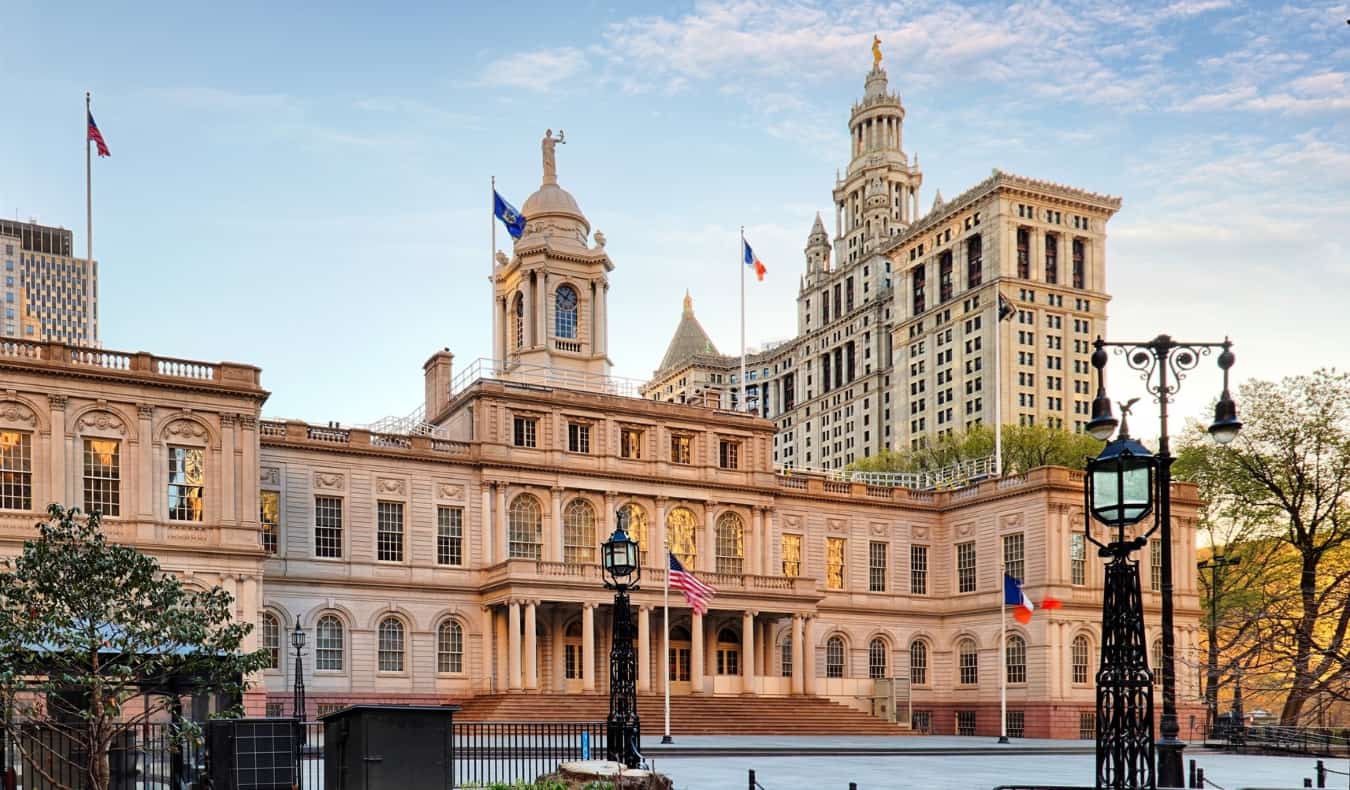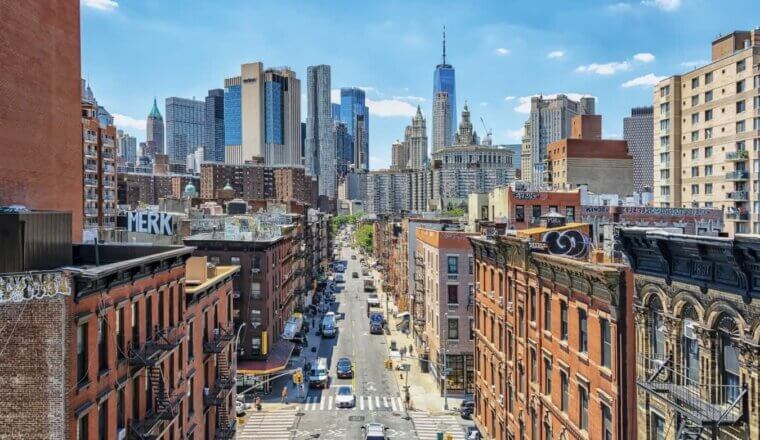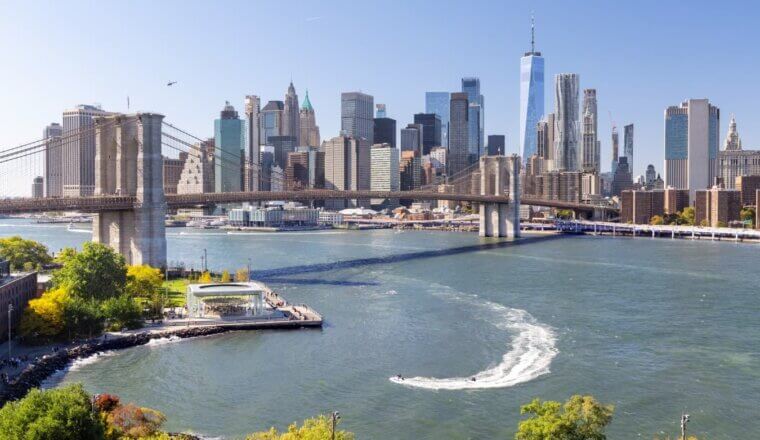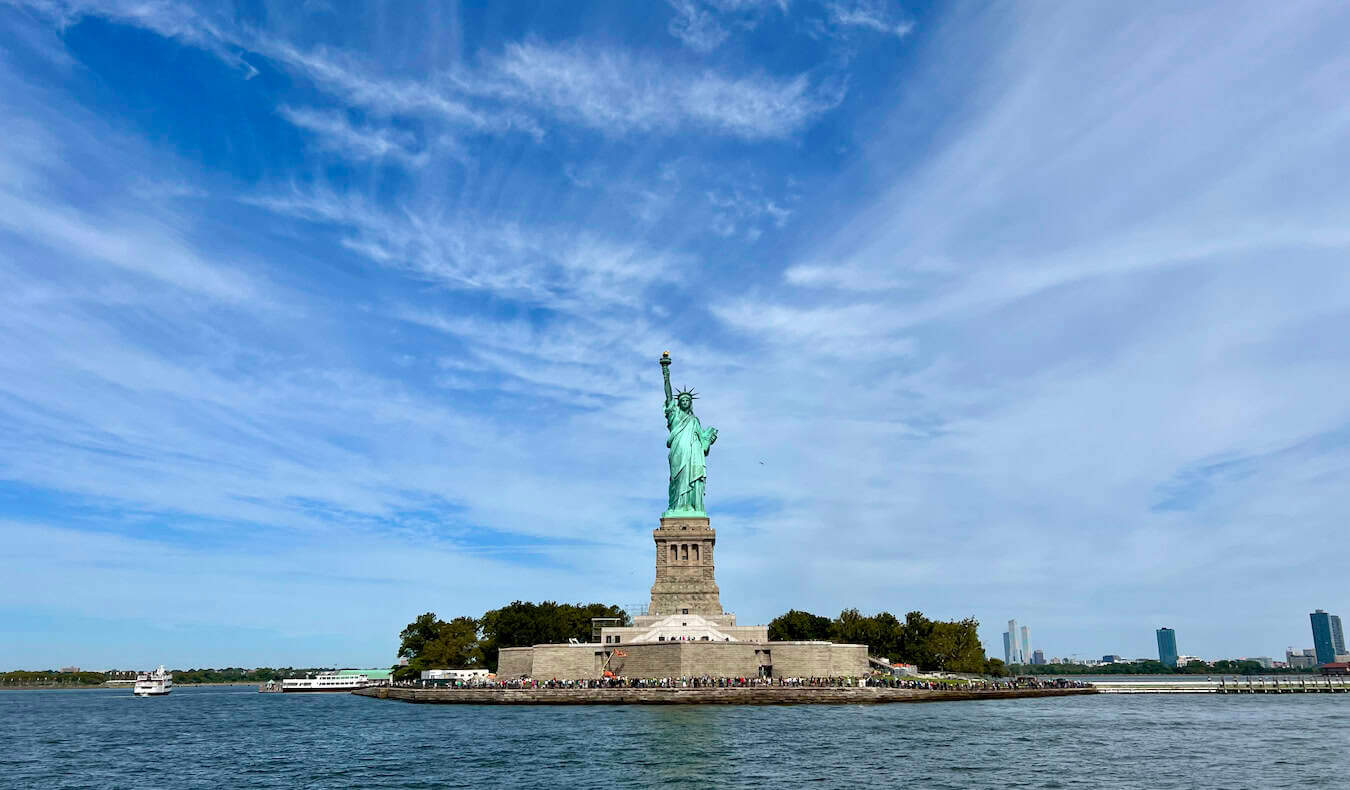A Guide to Exploring Colonial New York City
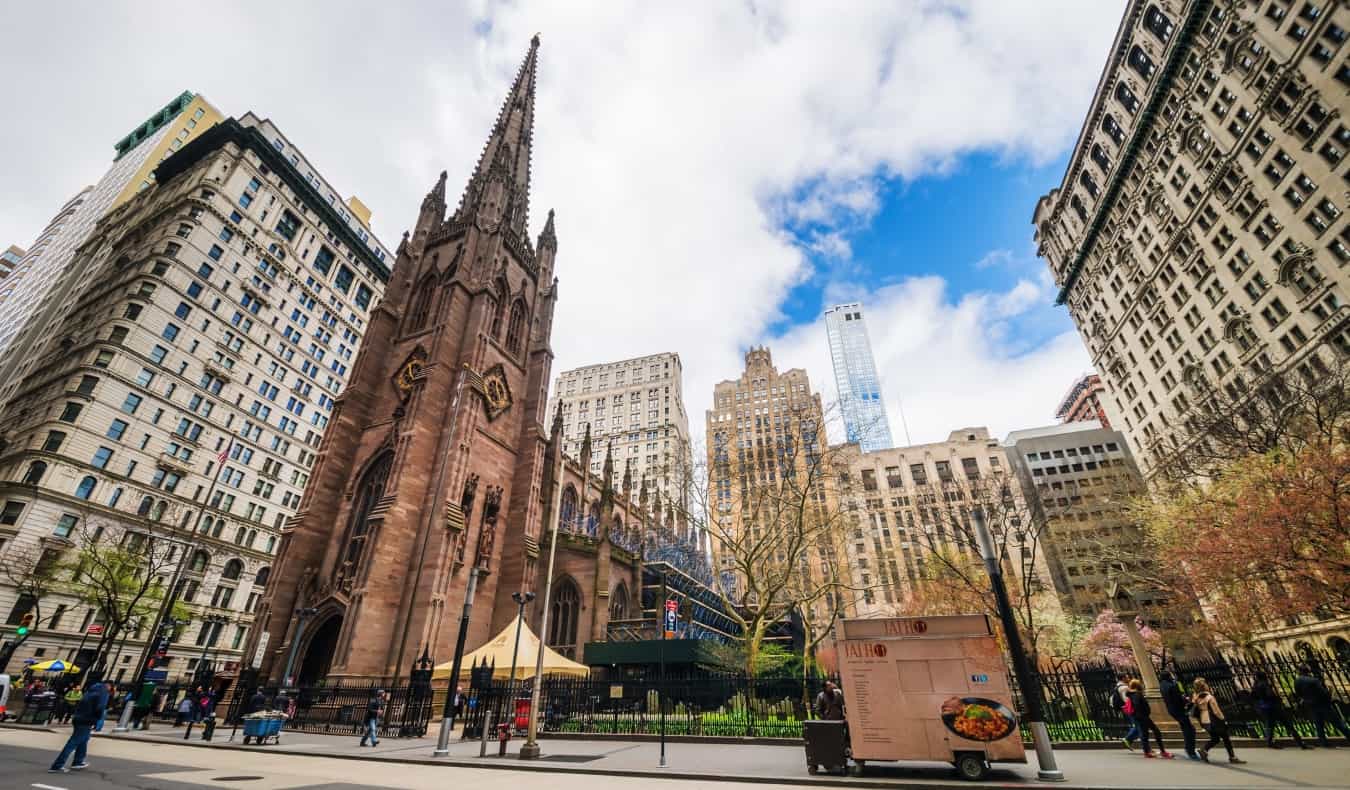
As a history nerd, I love taking a deep dive into a destination’s past. I’m a firm believer that if you don’t understand where people have come from, you’ll never understand where they are now. It’s a big reason why I love museums so much.
As one of the oldest cities in the country, New York City has a lot of history.
First settled by the Dutch as “New Amsterdam,” the Dutch surrendered the city to the English in 1664. The city was a major trading center located at the mouth of the Hudson River. After the Revolution, New York was the hub of America’s power and government, officially becoming the nation’s capital in 1789 when George Washington was sworn in.
While it’s no longer the nation’s capital (it moved to Philadelphia the following year and then to Washington, DC in 1800), NYC is still the beating heart of the country.
Since I love adding “themes” to my travels, a great theme for your visit to New York is colonial history — and much of the city’s colonial history is still present today.
Most of the sights are located in the financial district (one of the most underappreciated parts of NYC), so it’s easy to visit everything in a day. Here’s what to see:
Table of Contents
1. The Battery (aka Battery Park)
Located on the southern tip of Manhattan, this park is where the Dutch built Fort Amsterdam in 1625 to defend their settlement. The British took the area over in 1664 and eventually renamed it Fort George. The fort’s cannon battery wasn’t used until 1776 when American forces took it over after declaring independence. While the fort was mostly destroyed during the Revolution, the battery was expanded after the war’s end.
Today, there are over 20 monuments and plaques in the park, covering everything from the Revolutionary War and the War of 1812 to immigration and much more. You can wander around the fort and then stroll through the surrounding park and take in the beautiful waterfront views of the harbor, the Statue of Liberty, and Ellis Island.
2. Fraunces Tavern
This is the oldest bar in New York City, having been converted from a home (built in 1719) to a tavern in 1762. Prior to the Revolution, the Sons of Liberty (a secret anti-British organization founded by Samuel Adams) would meet here to discuss their plans and philosophies.
During the war, the building was damaged when Alexander Hamilton stole British artillery, provoking a response from the British navy who then sent a cannonball through the roof. After the war, George Washington said farewell to his officers and troops of the Continental Army here.
As the war was ending, meetings between the British and Americans were held here to discuss slavery. The US insisted that no slaves freed by the British could leave US soil (many had already been sent to freedom in what is now Canada). (It was not one of our finest moments as a country.)
Today, on the first floor, there’s a pretty decent restaurant (slightly overpriced though) and a bar with a great selection of draft beers. The tavern hosts historical talks and is home to a small museum on the second floor, which includes all kinds of historical documents and objects, temporary rotating exhibits, and a re-creation of the 18th-century public dining room in which George Washington delivered his farewell address. The permanent exhibition chronicles the building’s history and highlights the pivotal events that took place here.
54 Pearl St, +1 (212)-425-1778, frauncestavernmuseum.org. Open daily, 12-5pm. Admission is $10 USD, with guided tours (free with admission) on Fridays at 1pm and Saturdays and Sundays at 2pm.
3. Bowling Green
This public park is the oldest in NYC. Even before it was officially designated a park in 1733, the area had a long history as an important public space. Originally it was a council ground for the indigenous Lenape, and later it was a parade ground, cattle market, and meeting ground for the Dutch.
During colonial times, the British installed a 4,000-pound gilded lead statue of King George III on horseback. It was repeatedly vandalized leading up to the war, forcing the British to build a fence around the park (the one that still stands today) and create anti-vandalism laws.
After the Declaration of Independence was read in 1776, the statue was toppled and dismembered. The head, allegedly, was mailed to England. The body, so the story goes, was melted down into bullets for the Continental Army.
Today, the area remains a park and there’s a plaque on the fence with a brief historical overview.
4. Trinity Church
Built in 1698, the original Trinity Church was a small parish church constructed by the Church of England. When the British seized New York after George Washington’s retreat, it was used as a British base of operations.
The original church was destroyed in the Great Fire of 1776, a massive blaze that wiped out upwards of 25% of the city (the Americans blamed the British for starting the fire, while the British blamed the revolutionaries). The new building, facing Wall Street, was consecrated in 1790. George Washington and Alexander Hamilton both regularly worshipped here (Hamilton-themed walking tours start from here). The church was then expanded in 1839 into its current form.
The graveyard dates back to the 1700s and many famous Americans are buried there, including Hamilton and his wife Elizabeth, Francis Lewis (signatory on the Declaration of Independence), John Alsop (Continental Congress delegate), Albert Gallatin (founder of NYU), Horatio Gates (Continental Army general), John Morin Scott (general and first secretary of state of New York), and Lord Stirling (Continental Army general).
89 Broadway, +1 212-602-0800, trinitywallstreet.org. The church is open daily from 8:30am-6pm (the Churchyard closes at 4pm).
5. St. Paul’s Chapel
Just up the street from Trinity Church (and officially part of its parish) is the oldest surviving church in Manhattan. Built in 1766, the Hearts of Oak (a student militia from Kings College) used the church’s grounds for drill practice during the Revolutionary War. Alexander Hamilton was an officer in the unit. After George Washington became the first president of the US in 1789, he attended services here, making the chapel his home church.
Today, it’s a National Historic Site, having survived the Great Fire of 1776, the Revolutionary War, and 9/11. The chapel is a simple hall decorated in pale colors. Glass chandeliers hang from the flat ceiling. It’s not particularly ornate, having a more modern and minimalist design (they use moveable chairs instead of pews to allow for more flexibility in what events can be held here).
209 Broadway, +1 212-602-0800, trinitywallstreet.org/about/stpaulschapel. Admission is free. Dress respectfully, as this is a place of worship.
6. Federal Hall National Memorial
This national memorial has served as New York’s city hall and the United States Custom House, as well as the site of the first Congress of the United States and George Washington’s presidential inauguration. It was also where the Continental Congress of 1765 met to discuss the Stamp Act, a tax imposed by the British crown.
The current structure, built in 1812, has a small museum that sheds light on the origins of America. Part of the balcony and railing where Washington was inaugurated are still on display as well. It’s one of my favorite spots in New York — and one way too often overlooked by visitors!
26 Wall St, +1 (212) 825-6990, nps.gov/feha/index.htm. Open Monday-Friday, 9am–5pm. Admission is free. You can also take a free 30-minute guided tour led by a Ranger (advance reservations required).
7. City Hall Park
This park is where New Yorkers held rallies both before and during the Revolutionary War, including a rally against the Stamp Act in 1765. When the Act was repealed the following year, a new flagpole was built here — known as the Liberty Pole — which waved a flag that said “Liberty.” People also gathered here to hear Washington read the Declaration of Independence in 1776; the spot is marked by a plaque from 1892 (another marks the location of the Liberty Pole).
During the war, the British converted it into a prison to hold American prisoners of war, where over 250 Americans were executed. In 1783, when the war was won, Washington raised an American flag over the park.
Nowadays, it’s a pretty park with a fountain and benches to relax on. You’ll see a lot of people here during lunch.
8. African Burial Ground National Monument
During the War of Independence, approximately 25% of the population of New York City was enslaved Africans or people of African descent. Over 40% of the population owned slaves, and the success and development of the city relied heavily on the work of enslaved men and women.
Once known as the “Negroes Burial Ground,” this is the largest colonial-era cemetery for both free and enslaved Black Americans. Studies estimate that upwards of 15,000 people were buried here in the 17th and 18th centuries.
The site is a US National Monument as well as a National Historic Landmark. A monument and a visitor’s center were built in 2007 to ensure that this important piece of history is not forgotten. Inside the visitor’s center are several exhibitions, films, and dioramas highlighting the life of slaves in the city. Visitors can learn how slaves were brought over by the Dutch, what their funerals were like, how they survived the harsh conditions in the city, and what archeologists learned when they exhumed the bodies from the area before building the monument.
The burial ground is a stop on the Slavery and Underground Railroad Walking Tour, on which you’ll learn about the integral role that enslaved Africans played in colonial New York.
290 Broadway, +1 (212) 238-4367, nps.gov/afbg/index.htm. Open Tuesday-Saturday 10am–4pm. Admission is free.
9. Van Cortlandt House Museum
The only site on this list not in lower Manhattan, this is the oldest building in the Bronx. In fact, it’s one of the oldest surviving buildings in the entire country. Built in 1748 by African slaves, the property was used during the Revolutionary War by the Comte de Rochambeau, the Marquis de Lafayette, and George Washington (who had his headquarters here during the final years of the war).
It’s one of the oldest historic museum houses in the country (the fourth oldest to be precise), and much of the furniture and items on display are from the colonial era. Today, you can tour the house to see what life was like during the war.
6036 Broadway, Van Cortlandt Park, +1 (718) 543-3344, vchm.org. Open Tuesday-Sunday 11am–4pm. Admission is $5 USD (free on Wednesdays).
Bonus Sites!
On Staten Island, you’ll find The Conference House, where Ben Franklin led a peace delegation in 1776 (it failed). The house has been refurbished and does events throughout the year. It’s open Saturdays and Sundays, 12-4pm, with guided tours starting every hour on the hour. Admission is $4 USD.
On the corner of Pearl and Broad, you’ll find the brick outline of Stadt Huys, the first city hall as well some glass portals that look down to remnants of the colonial city that were found in the 1970s.
You’ll also find bricks that show you where the old shoreline used to be during colonial days. (Everything from Broad down is landfill designed to expand the city as it became a bigger and bigger shipping hub.)
Guided Tours
While it’s really easy to walk around and see these sites for yourself, a walking tour can provide a lot more historical context (you know I love a good walking tour!). Here are some paid and self-guided options:
- George Washington’s New York – Download the app “GPSmyCity: Walks in 1K+ Cities” for this free self-guided tour. It’s a nice companion to the above itinerary.
- New York Historical Tours – NY Historical Tours runs a private two-hour “Alexander Hamilton and the Founding Fathers” tour on the birth of America and the men who made it possible. At $279 USD, this is best split among a group.
- Revolutionary Tours – This three-hour “Washington and Hamilton” tour is a deep dive into colonial history. It’s informative and entertaining and will give you a much deeper appreciation for these two giants of history. Tours are offered Saturdays at 12pm and are $44.95 USD per person.
- Remnants of Dutch New Amsterdam – This walking tour offered by Untapped Cities takes you through the streets of lower Manhattan with a focus on Dutch colonial history. Tickets are $39 USD.
New York City has a lot of history you shouldn’t miss. Whether you’re looking for a complete historical tour or just want to add some historical sights into your existing New York City itinerary, these suggestions will provide a glimpse beyond the standard tourist trail. Since most all these sites are close together (except Van Cortlandt House, which is in the Bronx), you can visit them in a day.
P.S. – There’s also a number of parks around NYC that used to be the locations for forts (and the forts that are there date from the 1800s) but there’s nothing really there now to see so I’ve left them off this list.
Get the In-Depth Budget Guide to New York City!
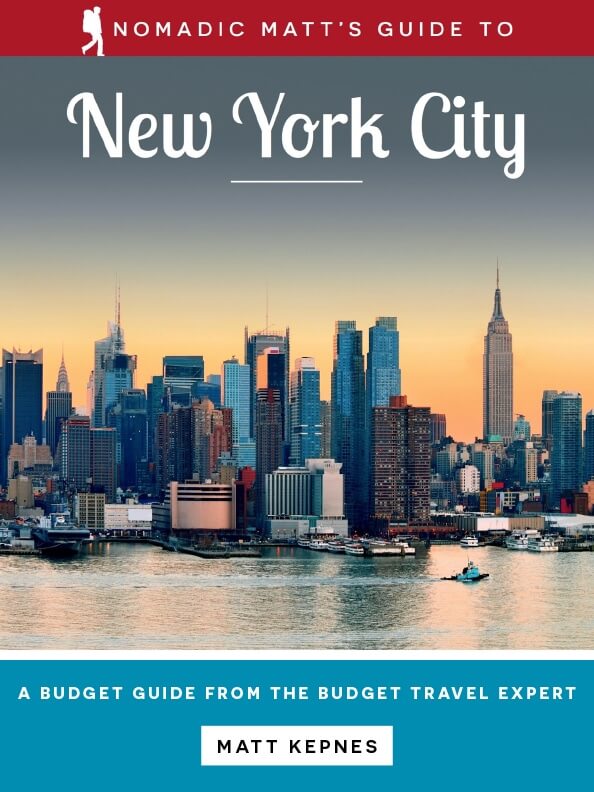
For more in-depth tips on NYC, check out my 100+ page guidebook written for budget travelers like you! It cuts out the fluff found in other guides and gets straight to the practical information you need to travel in the city that never sleeps. You’ll find suggested itineraries, budgets, ways to save money, on- and off-the-beaten-path things to see and do, non-touristy restaurants, markets, bars, safety tips, and much more! Click here to learn more and get your copy today.
Book Your Trip to New York City: Logistical Tips and Tricks
Book Your Flight
Use Skyscanner to find a cheap flight. They are my favorite search engine because they search websites and airlines around the globe so you always know no stone is left unturned.
Book Your Accommodation
You can book your hostel with Hostelworld as they have the biggest inventory and best deals. If you want to stay somewhere other than a hostel, use Booking.com as they consistently return the cheapest rates for guesthouses and cheap hotels.
If you’re looking for more places to stay, here is my complete list of my favorite hostels the city.
Additionally, if you’re wondering what part of town to stay in, here’s my neighborhood guide to NYC!
Don’t Forget Travel Insurance
Travel insurance will protect you against illness, injury, theft, and cancellations. It’s comprehensive protection in case anything goes wrong. I never go on a trip without it as I’ve had to use it many times in the past. My favorite companies that offer the best service and value are:
- Safety Wing (best for everyone)
- Insure My Trip (for those over 70)
- Medjet (for additional evacuation coverage)
Looking for the Best Companies to Save Money With?
Check out my resource page for the best companies to use when you travel. I list all the ones I use to save money when I’m on the road. They will save you money when you travel too.
Want More Information on NYC?
Be sure to visit our robust destination guide on NYC for even more planning tips!

